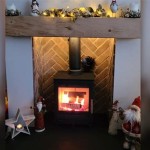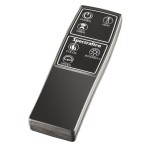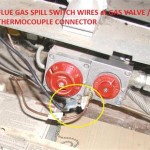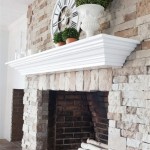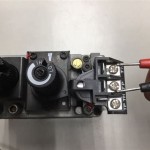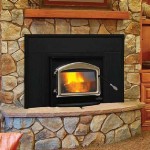Built-In Outdoor Fireplaces: Enhancing Outdoor Living Spaces
Built-in outdoor fireplaces represent a significant investment in home improvement, transforming patios and backyards into inviting, year-round living spaces. Unlike portable fire pits or chimineas, a built-in fireplace offers permanence, architectural integration, and a substantial focal point for outdoor entertainment and relaxation. The design and construction of a built-in outdoor fireplace require careful planning, adherence to building codes, and skilled execution to ensure safety, functionality, and aesthetic appeal. This article explores the various aspects of built-in outdoor fireplaces, from design considerations to construction processes and maintenance requirements.
The appeal of an outdoor fireplace lies in its ability to extend the usability of outdoor spaces beyond the warmer months. A crackling fire creates a cozy ambiance, making evenings more enjoyable and providing warmth during cooler temperatures. Furthermore, a well-designed outdoor fireplace can significantly enhance the property's value and overall aesthetic, blending seamlessly with the existing landscape and architectural style of the home. Before embarking on such a project, homeowners should carefully consider their needs, budget, and local regulations to ensure a successful and satisfying outcome.
Planning and Design Considerations
The initial stage of building a built-in outdoor fireplace involves meticulous planning and design. This process encompasses several crucial elements, including location selection, style determination, material selection, and adherence to local building codes. A well-thought-out design will not only ensure the fireplace functions efficiently but also integrates seamlessly with the surrounding environment.
Location Selection: The location of the outdoor fireplace is paramount. Factors to consider include proximity to the house, prevailing wind direction, views, and potential obstructions. It is crucial to avoid placing the fireplace too close to flammable materials such as trees, fences, or the house's siding. Ideally, the fireplace should be situated in a location that provides both privacy and protection from the elements. Wind direction is particularly important because smoke can become a nuisance if it consistently blows towards seating areas or the house. Furthermore, consider any existing views that the fireplace might obstruct or enhance. The area around the fireplace should also allow for adequate seating and circulation.
Style Determination: The style of the outdoor fireplace should complement the architectural design of the house and the overall aesthetic of the outdoor space. Common styles include traditional, rustic, contemporary, and modern. Traditional fireplaces often feature brick or stone and may incorporate decorative elements such as mantels and hearths. Rustic fireplaces typically utilize natural materials like river rock or rough-hewn stone, creating a more organic and informal look. Contemporary fireplaces often incorporate sleek lines and minimalist designs, using materials such as concrete or metal. Modern fireplaces may feature bold geometric shapes and unconventional materials, creating a striking focal point. The chosen style should reflect the homeowner's personal preferences and enhance the overall ambiance of the outdoor space.
Material Selection: The materials used in the construction of an outdoor fireplace must be durable, weather-resistant, and aesthetically pleasing. Common materials include brick, stone, concrete, and metal. Brick is a classic and versatile option that provides excellent heat retention and durability. Stone offers a natural and timeless look, and different types of stone, such as limestone, sandstone, and granite, offer varying textures and colors. Concrete is a versatile material that can be molded into various shapes and finishes, providing a modern and customizable look. Metal, such as stainless steel or corten steel, can be used for components such as the firebox or chimney, adding a contemporary touch. The selection of materials should consider the local climate, the desired aesthetic, and the overall budget.
Building Codes and Permits: Before commencing construction, it is essential to obtain the necessary building permits and ensure compliance with local building codes. These codes typically regulate aspects such as the fireplace's size, height, chimney requirements, and clearance from combustible materials. Failure to comply with building codes can result in fines, delays, or even the removal of the fireplace. Contacting the local building department is a critical step in the planning process to understand the specific requirements and obtain the necessary permits. Inspections may be required during various stages of construction to ensure compliance with the codes.
Construction Process
The construction of a built-in outdoor fireplace is a complex process that requires careful attention to detail and adherence to proper building techniques. The process typically involves several stages, including site preparation, foundation construction, firebox construction, chimney construction, and finishing touches. Each stage requires specific skills and expertise to ensure the fireplace is structurally sound, operates safely, and meets the desired aesthetic standards.
Site Preparation: The first step in the construction process is site preparation. This involves clearing the area of vegetation, debris, and any obstructions. The ground should be leveled and compacted to provide a stable base for the foundation. Depending on the soil conditions, additional steps may be necessary, such as adding gravel or reinforcing the soil with geotextile fabric. Proper site preparation is crucial for ensuring the fireplace's long-term stability and preventing settling or shifting.
Foundation Construction: The foundation is the most critical structural component of the fireplace, providing a solid base to support the weight of the entire structure. The foundation typically consists of a concrete slab reinforced with steel rebar. The depth and dimensions of the foundation will depend on the size and weight of the fireplace, as well as the local soil conditions. The concrete should be poured and leveled carefully to ensure a flat and even surface. It is essential to allow the concrete to cure properly before proceeding with the next stages of construction.
Firebox Construction: The firebox is the heart of the fireplace, where the fire is contained. It is typically constructed using fire-resistant materials such as firebrick or refractory concrete. Firebrick is a dense and durable material that can withstand high temperatures without cracking or deteriorating. Refractory concrete is another excellent option, offering similar heat resistance and durability. The firebox should be designed with proper dimensions to ensure efficient combustion and heat distribution. A smoke shelf is often included to help direct smoke up the chimney and prevent it from entering the seating area. The firebox should also be equipped with a grate to support the firewood and allow for proper airflow.
Chimney Construction: The chimney is responsible for venting smoke and gases away from the seating area. It is typically constructed using brick, stone, or metal. The chimney's height and diameter should be designed according to the fireplace's size and the local building codes. A chimney liner is often required to protect the chimney's interior from corrosive gases and creosote buildup. The liner can be made of stainless steel or clay tiles. The chimney should also be topped with a spark arrestor to prevent embers from escaping and potentially causing fires. Proper chimney construction is crucial for ensuring safe and efficient fireplace operation.
Finishing Touches: Once the structural components of the fireplace are complete, the finishing touches can be added to enhance its aesthetic appeal. This may include adding a mantel, hearth, or decorative stonework. The mantel can be made of wood, stone, or concrete and provides a focal point for the fireplace. The hearth is a non-combustible surface that extends out from the firebox and protects the surrounding area from sparks and embers. Decorative stonework can be added to the fireplace's exterior to complement the surrounding landscape and architectural style. The finishing touches should be carefully selected to create a cohesive and visually appealing design.
Maintenance and Safety
Proper maintenance and adherence to safety guidelines are essential for ensuring the long-term functionality and safety of a built-in outdoor fireplace. Regular maintenance will prevent deterioration, ensure efficient operation, and minimize the risk of fire hazards. Safety precautions must be followed to protect users and the surrounding environment from potential harm.
Cleaning and Inspection: Regular cleaning and inspection are crucial for maintaining the fireplace's performance and safety. The firebox should be cleaned regularly to remove ashes, soot, and creosote buildup. Creosote is a highly flammable substance that can accumulate in the chimney and pose a significant fire hazard. The chimney should be inspected annually by a qualified professional to ensure it is free from obstructions and structural damage. Any cracks or damage to the firebox or chimney should be repaired promptly to prevent further deterioration.
Fuel Selection and Storage: The type of fuel used in the fireplace can affect its performance and safety. Seasoned hardwood is the best option for burning in an outdoor fireplace. Seasoned wood burns cleaner and produces less smoke compared to green or wet wood. Avoid burning treated wood, painted wood, or other materials that can release harmful chemicals into the air. Store firewood in a dry and well-ventilated area away from the house and other flammable materials. Cover the firewood to protect it from rain and snow.
Safe Operation Practices: Always follow safe operating practices when using the outdoor fireplace. Never leave a fire unattended. Keep a fire extinguisher or a bucket of water nearby in case of emergency. Ensure that the area around the fireplace is clear of flammable materials. Supervise children and pets closely when the fireplace is in use. Avoid using accelerants such as gasoline or kerosene to start a fire. Use kindling and newspaper to start the fire gradually. Be mindful of the wind direction and ensure that smoke is not blowing towards seating areas or the house. Always extinguish the fire completely before leaving it unattended.
Professional Inspections: Regular professional inspections are recommended to ensure the fireplace's structural integrity and safety. A qualified chimney sweep can inspect the chimney for creosote buildup, obstructions, and structural damage. A professional mason can inspect the firebox and chimney for cracks, spalling, or other signs of deterioration. These inspections can identify potential problems early on and prevent costly repairs or dangerous situations.
By carefully considering these factors, homeowners can ensure that their built-in outdoor fireplace provides years of enjoyment, enhancing their outdoor living space and creating a warm and inviting atmosphere for family and friends.

How We Built Our Outdoor Fireplace Chris Loves Julia

Five Fabulous Outdoor Fireplace Ideas Coogans Landscape Design

How To Build An Outdoor Fireplace Step By Guide Buildwithroman

Outdoor Wood Fireplaces Jetmaster

An Outdoor Fireplace With Built In Grill And Wood Storage Remodel Backyard

4 Easy Outdoor Living Spaces Trade Mark

25 Outdoor Fireplace Ideas Fireplaces Fire Pits

How To Build An Outdoor Fireplace

Outdoor Fire Pit Fireplace Design Build Professional Install Oasis Living

Outdoor Fireplaces Jetmaster
Related Posts

